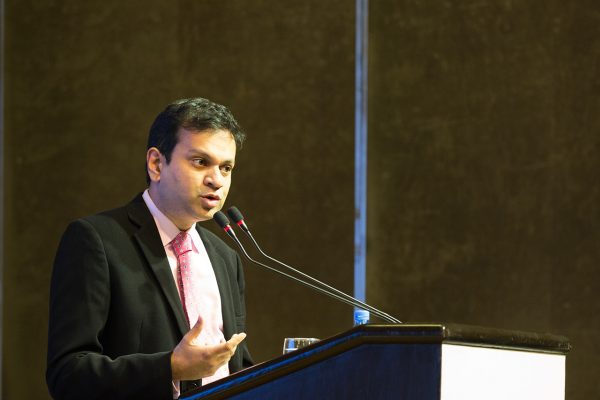Violence Against Women campaigns: Is raising awareness alone enough?
Reading Time: 3 minutes
There are campaigns and movements across the world dedicated to raising awareness of violence against women. But beyond raising awareness, what actual action takes place? What are the tangible effects?
One Billion Rising (OBR) was first launched on Valentine’s Day in 2012 as a “call to action” to end violence against women. The name reflects the statistic that 1 in 3 women worldwide have been beaten or raped during their lifetime, according to a publication by the World Health Organisation.
The theme of the 2018 campaign was “Solidarity Against the Exploitation of Women”, and on the 14 February 2018, BRAC in Uganda, Nepal, Myanmar and Pakistan, and other organisations, groups and individuals all over the world participated in events to raise awareness of violence against women (VAW).

Members of our adolescent girls’ clubs and female community health volunteers rally for OBR in Nepal.
OBR describes itself as “the biggest mass action to end violence against women in human history”. Whether it was the right or not, my first thought was that of scepticism.
It was inspiring to see photos and read about the events taking place, and to know that millions of men and women across the world were gathering together for a single, united purpose. Yet I could not help but wonder whether such campaigns are actually effective at reducing incidents of violence.
There are many campaigns and movements, at international, regional, national and community levels that are similarly dedicated to raise awareness of VAW. But beyond raising awareness, what actual action takes place? What were the tangible effects?
Credit has been made to OBR for having provided gender sensitivity training to rickshaw drivers in India, supported activists in demanding that authorities take action against sex work amongst young girls, and more.
Still, coming from a scientific background, I felt the need to dig deeper. What do studies and statistics have to say about the effectiveness of such campaigns? Is there evidence to show that they achieve what they aim to do: reduce incidents of violence against women?
Many studies have found that social marketing and public education campaigns increase awareness of VAW.
An evaluation of the 1993 New Zealand Police Family Violence Campaign found that women’s support services reported increases in the number of women seeking help. Even more encouragingly, there were also significant increases in the number of self-referrals from men who were seeking help due to family violence problems.
Campaigns are also able to have long lasting effects, such as The Soul City VAW campaign, which accelerated the implementation of the Domestic Violence Act through influencing South African national and provincial governments.
However, some campaigns have been found to have no, or even negative effects. A 2001 evaluation of three months of the Men Can Stop Rape (MSCR): Strength Campaign in high schools found that men’s confidence in talking about consent in sexual situations remained the same, and there was even a decrease in confidence in the ability to stop sexual activity if the other person wishes to. The Open Your Eyes campaign (2006) resulted in an increase in women’s perceived severity of domestic violence, but actually decreased men’s perceived severity of domestic violence.
It is alarming to know there can be unintended and even negative consequences of such campaigning. The varied results of VAW campaigns call to question whether we should support campaigns which do not conduct studies on their effects.
Admittedly, the effects of a campaign like OBR may be difficult to measure considering its scale. The campaign has reached millions of people and organising an OBR event in any shape and form is open to anyone in the world. However, the lack of empirical evidence does not justify saying that such campaigns are ineffective. It is clear at least that the message of OBR has reached multitudes of people.
I was shocked when I first read the statistic behind the name ‘One Billion Rising’. It seemed impossible to me, an outrage, that it was as many as 1 in 3 women on this world who has or will be beaten or raped in her lifetime, and this fact is often on my mind. In my search for the tangible effects of such campaigns, I have realised that even without participating, without gathering, dancing or rallying for OBR, understanding the reason for the name of the campaign alone has had its effect.
Wendy Xiao is an intern in communications and agriculture and livestock for BRAC International.





